Michael The Archangel. Masterwort. The Holy Ghost. Angelica. It has a number of names, is usually about 8 ft tall, purple, looks like it came out of a Doctor Suess book. It took me the better part of six years to find this plant. In this post I'll share what I've learned about it, and how you can cook with angelica yourself.
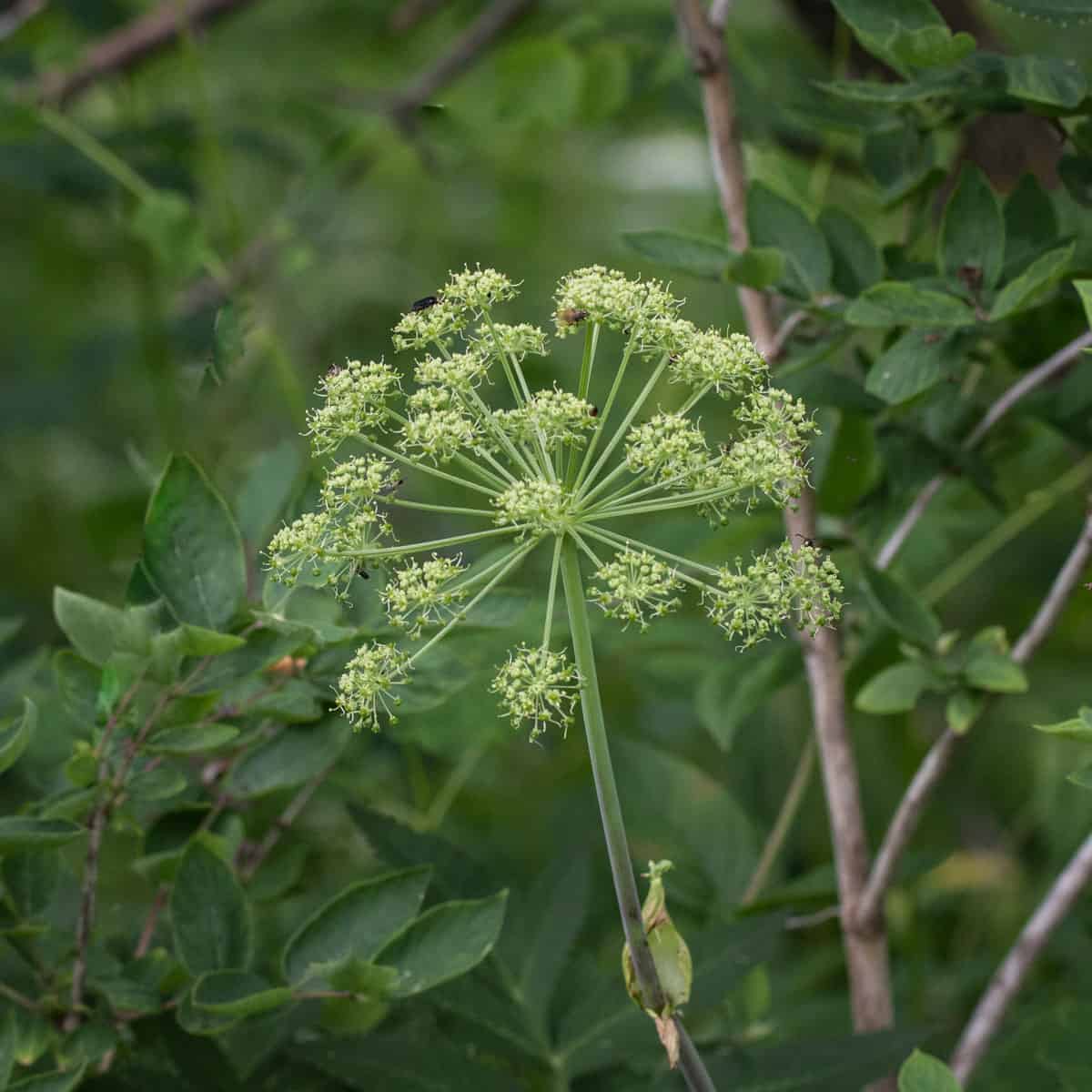
There's lots of different plants in the family of angelica (over 60), but for my purposes here, I'm speaking about common wild angelica, which in Wisconsin and Minnesota where I hunt should be Angelica atropurpurea.
When I finally realized that I 'd found it along an old road in rural Wisconsin, I got so excited. I cut off one of the branches with a pocket knife and put it up to my nose. I will never forget the floral smell, like a sickeningly sweet Victorian perfume, with a heart note of, carrot? It's one of the most unique herbs I've ever experienced.
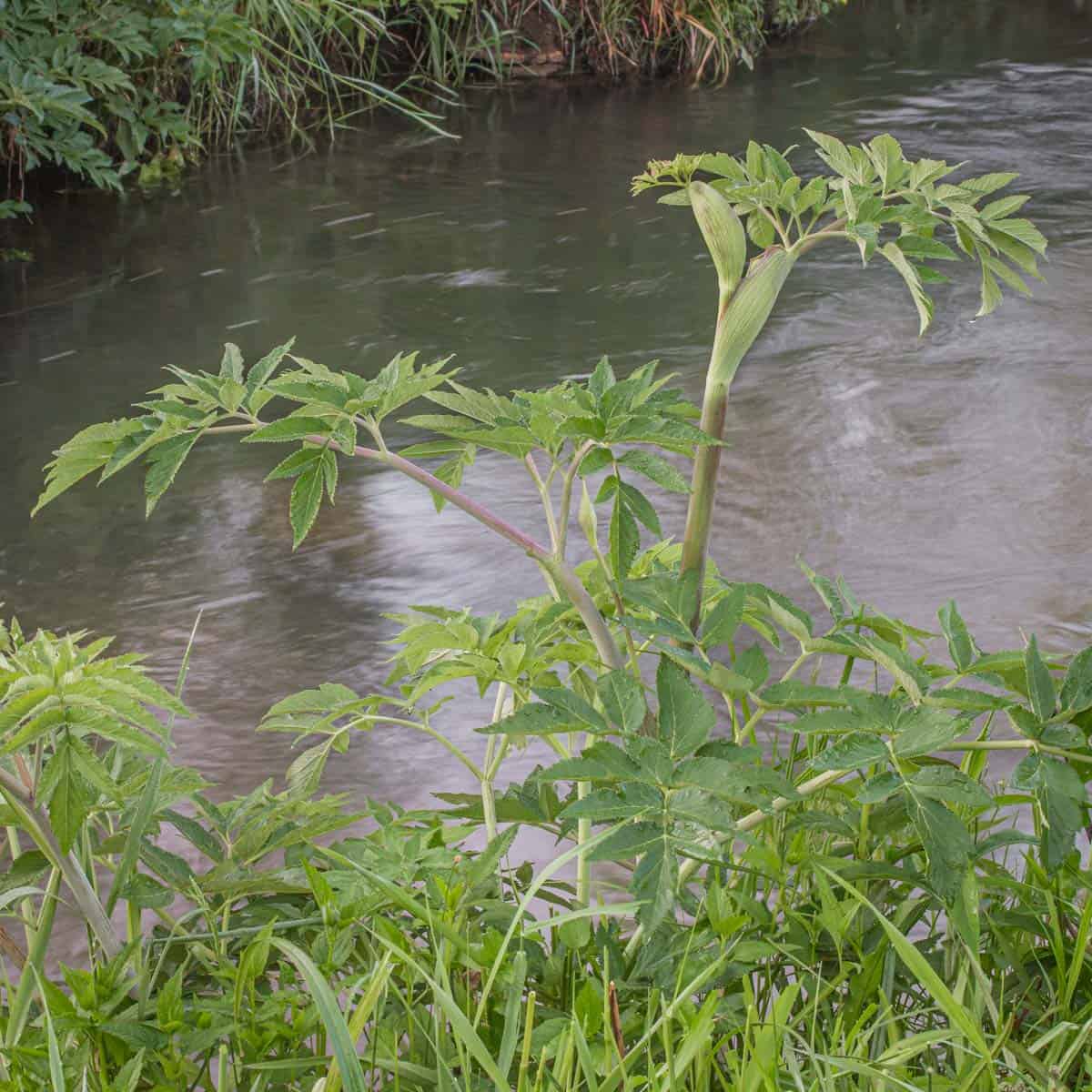
In literature, it's described as an herb, but it's really more. Angelica has both a part that could be considered a vegetable (the large stem), and parts that resemble and can be used herbs (root, seeds, leaves).
I read about it first in old European dessert recipes where the stem is used as a garnish for cakes and sweets. Eventually I noticed people talking about it in wild food guides, although it's mentioned sparsely.
There aren't many sellers of candied Angelica stem, and it's expensive (about 24-30$/lb). I had just about given up finding it until this year, and I doubt if large concentrations of it exist in Southern Minnesota (I have heard reports of it from friends of mine up north on the Iron Range though).
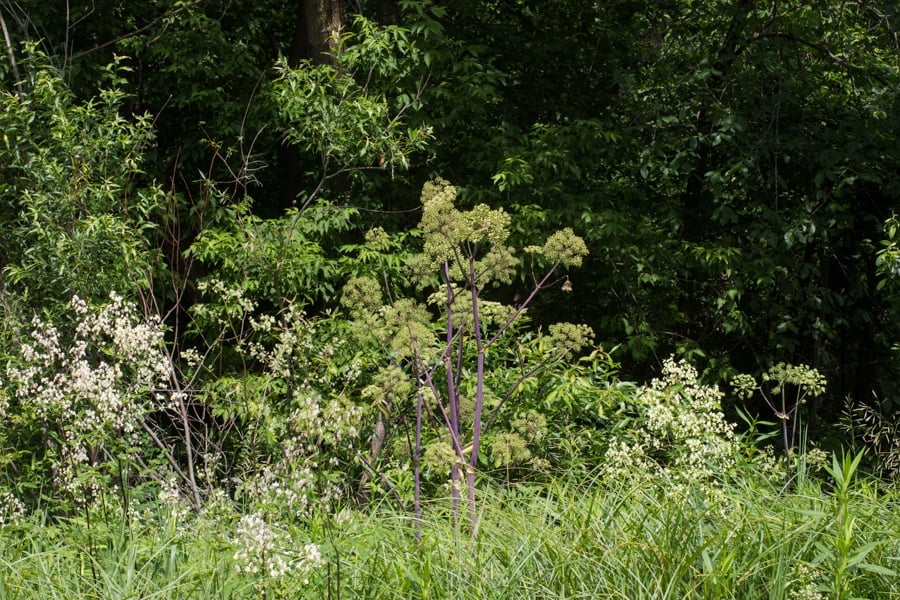
In an effort to keep a bunch of info succinct, here's what I've learned divided into some useful categories.
Does Angelica Look Like Hemlock?
Only in passing. The leaves are larger and sweet smelling. What it does resemble closely in size and shape is cow parsnip, but the scent is much different. Angelica can also give you a phototoxin rash from handling it if the sap gets on your skin.
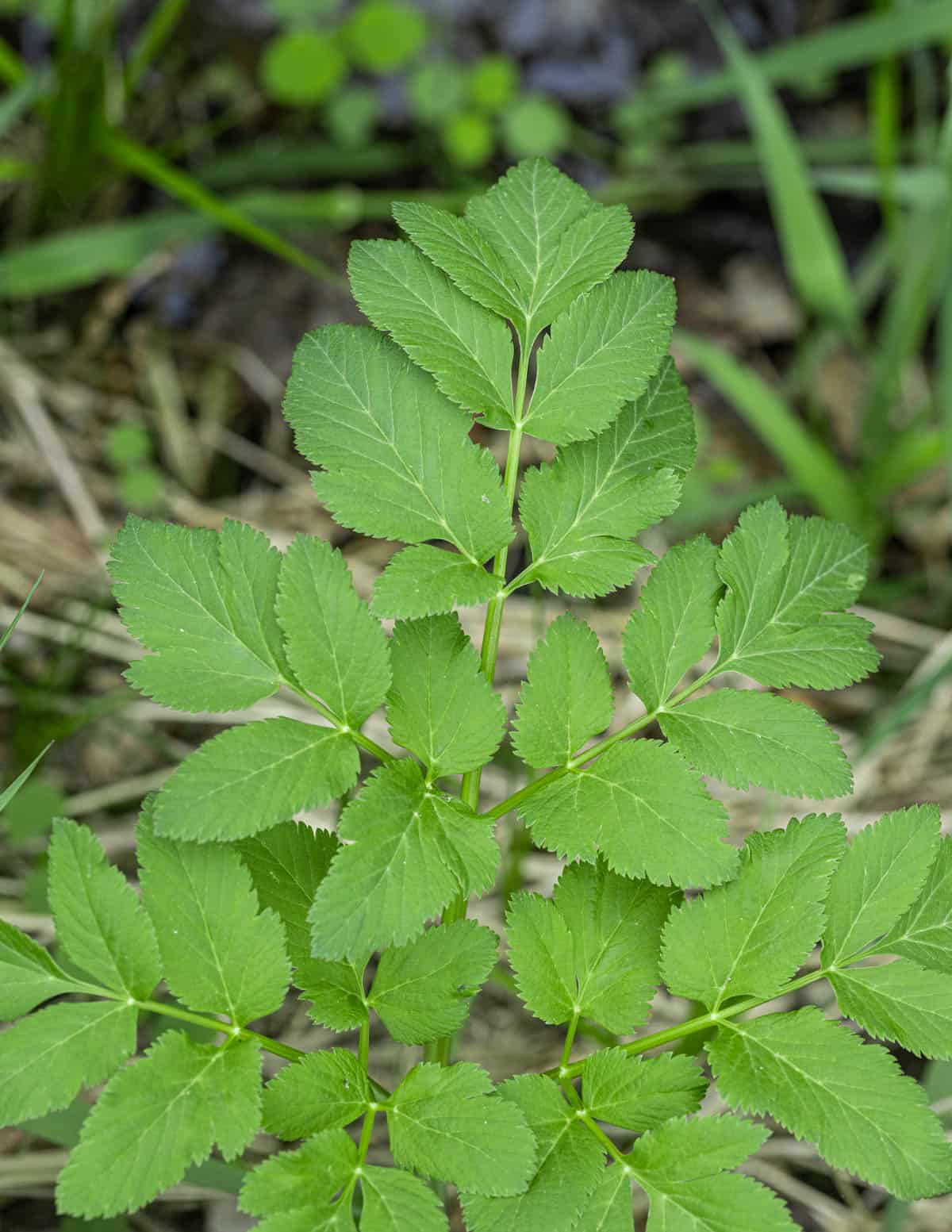
When to Harvest
Angelica is not exactly a perennial, and not exactly a biennial-It's special. It grows very slowly, and probably won't go to seed until it's 3rd year of growth. The stalks can be harvested for maximum yield during their 2nd year, but can also be picked early during the 3rd year of growth before the plant goes to seed.
After it goes to seed, the stem is too tough to be cooked, but could be used to make a syrup by cooking it in 50-50 sugar and water. April/May through June is a good window to pick it in the Midwest for it's delicious stem.
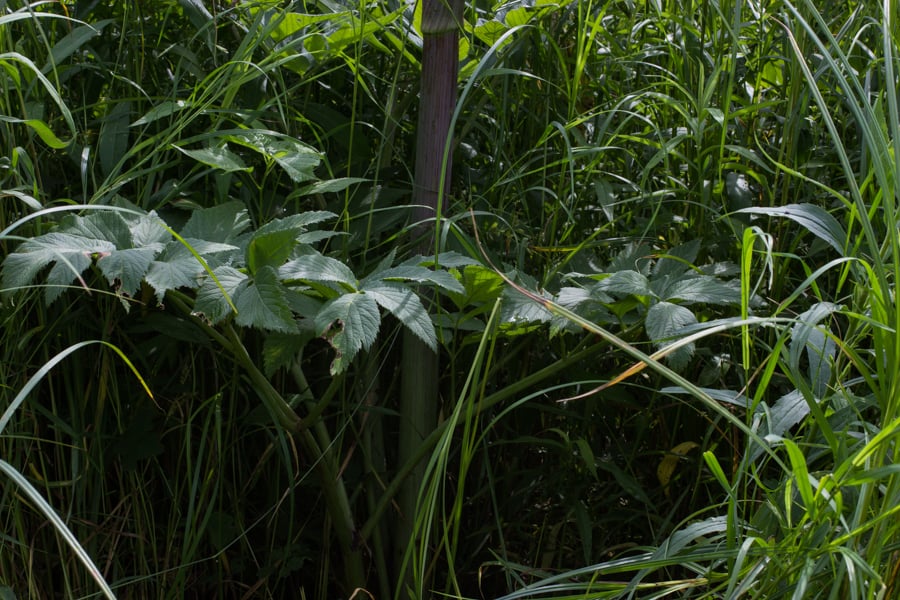
You'll want to find damp areas around lakes, swamps, and ponds for this. An easy way to look for it is to look for them on the side of the road in the ditch, which can point you in the direction of larger colonies nearby.
Usable Parts
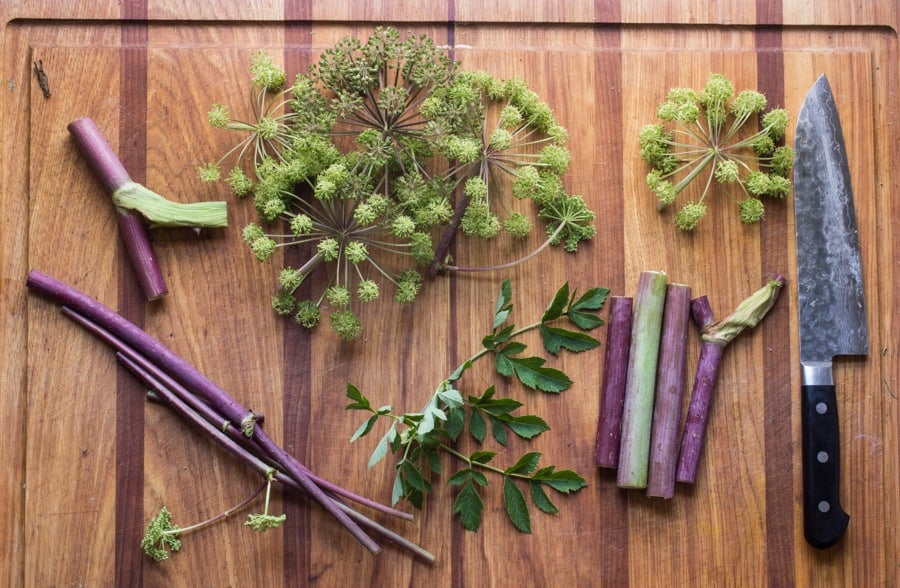
Stem
The strongest flavored part of the plant. Only tender stems should be used. They can be boiled in water with a pinch of baking soda to make it tender, then peeled of their outer skins, cut into pieces and candied and used in cookies and cakes, or for decorating, or used with savory dishes, especially poultry and fowl.
The stem can also be cooked in liquid and used as an aromatic vegetable. It's especially good with meat where sweet things and sauces are welcome, so pork, lamb, and especially wild fowl will love it.
Blossoms
Besides the stem, angelica blossoms are the best part of the plant to eat. They can be eaten as a vegetable, or a dessert. They're traditionally harvested in the Salentine peninsula of Italy.
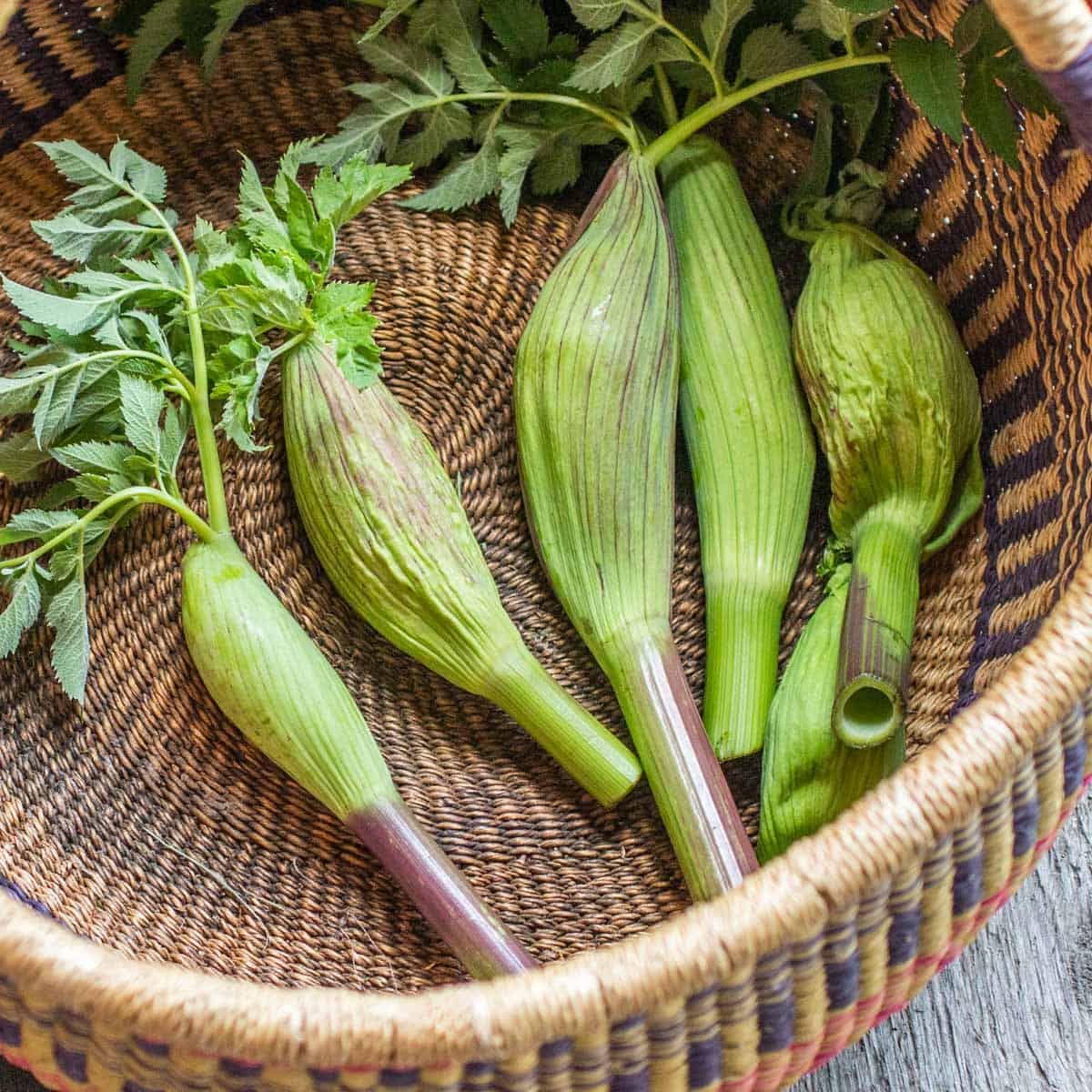
Seeds
The last gift angelica will give you. Pick the seeds from the flower heads, remove any small pieces of stem, then dry in a dehydrator and store in an air-tight container. After drying they will keep for years. Use like fennel or anise seed.
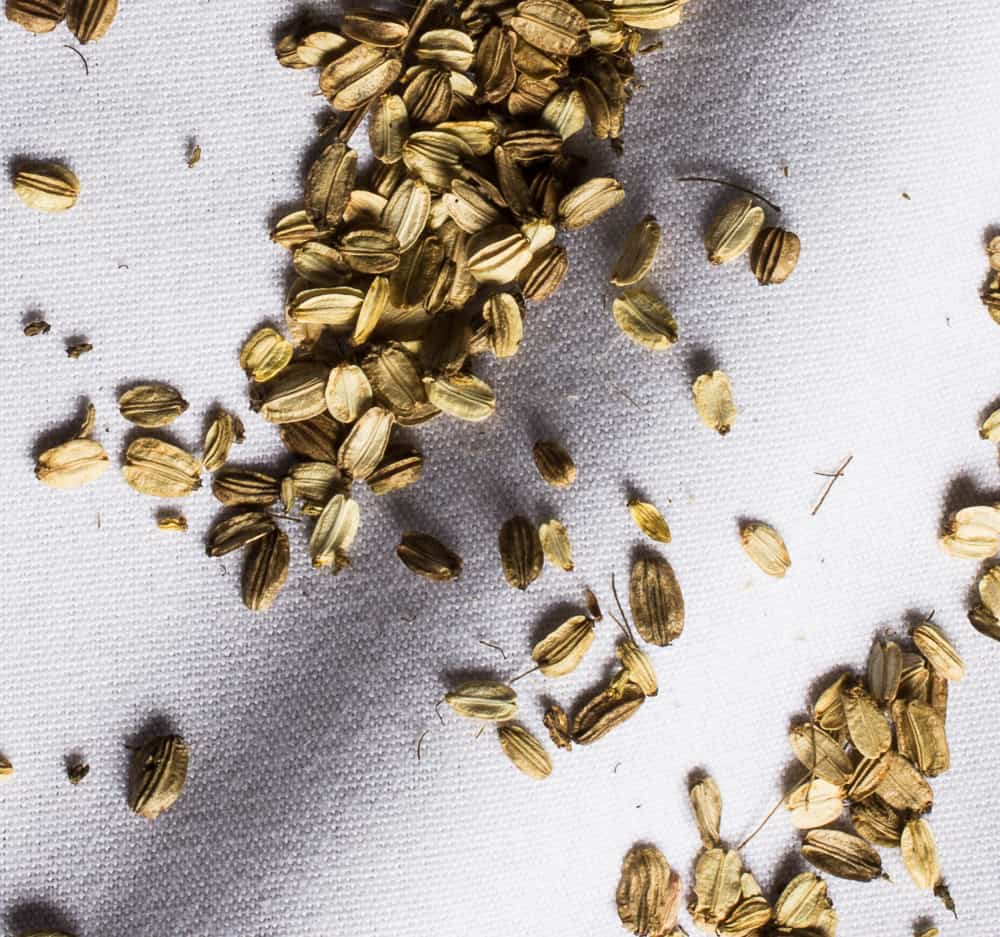
One of my favorite uses so far has been dusting fish with ground angelica seed and then sauteing. I've also cured fish with a mix of the seed ground in sugar and salt per gravlax, then crusted it with ground toasted seeds afterwords, wrapped tightly with plastic to make the crust adhere.
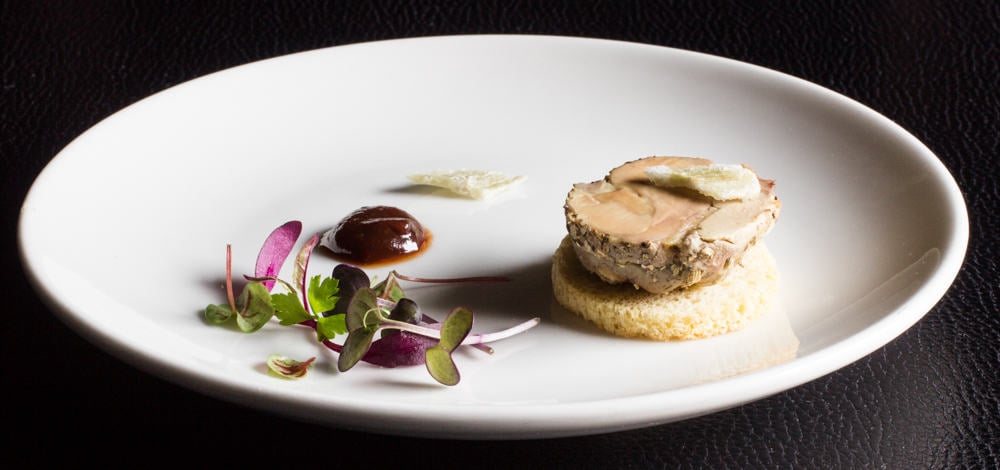
Leaves
These can be picked whenever y0u see them, but smaller, more tender leaves are better for eating. They're slightly bitter, but still retain the floral-carrot-y flavor of angelica, so they are great chopped up in salads, used as an herb for cooking fish, or blanched in water with a pinch of baking soda, shocked in ice water, then dipped in sugar syrup, and rolled in sugar and dried to use as a pretty and aromatic garnish to desserts or drinks.
Root
The root is used to infuse many different herbal liquors that are popular in Europe, herbsaint, nocino, gin, absinthe, etc. Remember if you dig up the root, the plant will not grow back. The root is hard and dense like a rock, but can be grated with a box grater, then used to infuse alcohol, or made into syrup. Working with the stem is a lot of work, I had a hard time using a hatchet to break it up.
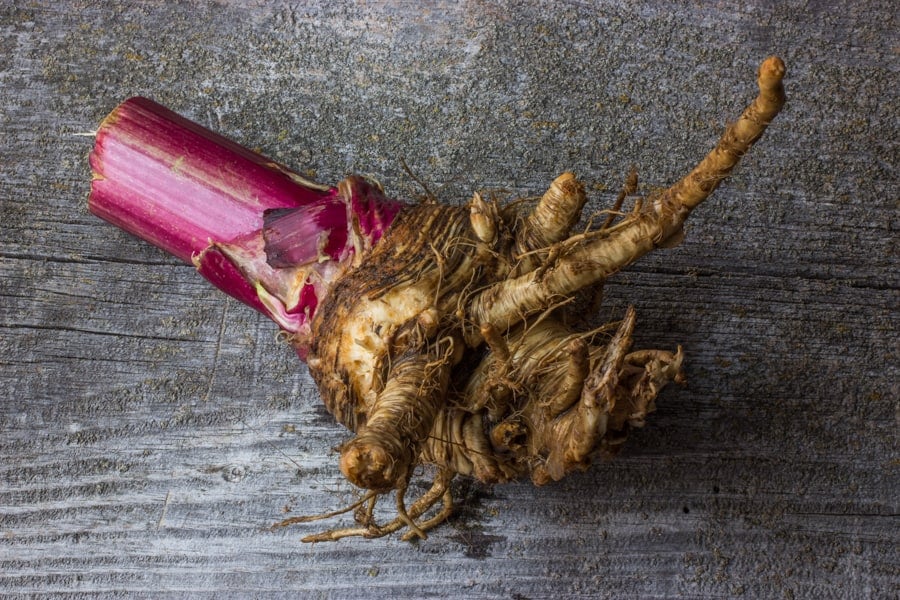
Notes on Cooking
- Angelica is a strong, but delicate flavor. The more things you combine it with, the less you'll taste it.
- For culinary purposes, angelica stem (which has the strongest flavor) is not dairy soluble, but it is alcohol and water soluble. This means if you want to flavor cream based sauces or flavorings with it, (which tastes ok) you will have to make a sugar syrup with it first, then add cream. If you cook angelica stem in dairy alone, you will not be able to taste it at all.
- When trying to think of how to pair the flavor of angelica with things, imagine how a carrot tastes, since they're in the same family. Things like orange, ginger, and soft herbs like tarragon, chervil, mint, and dill are good flavors to pair with it.
- For desserts, angelica would love to be alongside ripe berries and fruit.
- It would not like to be with dark or milk chocolate.
- If you like to infuse your own liquors, you'll want to try throwing some chopped angelica stems, seeds, or grated root into an infusion-it's fantastic.

Mike Moranz
If my identification is correct it is rampant all along the small streams and rivers of Whitewater wildlife management area around Elba MN and Whitewater state park which does allow harvesting of berries and mushrooms but likely not whole plants.
Alan Bergo
Yes it's very common down there. Likes it wet.
Sid S
Hello,
Im curious why you searched for 6 yrs for the wild Angelica. Is it for the satisfaction of the forage, or does it taste much different to the garden variety Angelica archangelica which is not subtle in flavor and grows easily and abundantly in most climes? In fact I stumbled on this post in search of ideas for my overly abundant Angelica, Thank you for all of the info!
Alan Bergo
Thanks Sid. To answer your question, asking me why I looked for a plant for so long in the wild instead of growing it is kinda like asking a Hunter why they didn’t buy their deer at a nursery, if that makes any sense. I also didn’t have any space or time to grow it as I lived in town in an apartment to be close to my restaurants.
Jason Zaros
Hi. Wonderful article! So, would the stems be nice added to a chicken soup as one might use celery sautéed with onions and carrots?
Thank you.
Jason
Alan Bergo
Potentially, but angelica has a strong flavor. I'd definitely try it though, in small amounts.
Judy Johnson
I'll have to look for Angelica. I thought I read a post from you that you found morels in a cut over of maple. Was that you? What county were you in?
Alan Bergo
Yes, Dunn county.
Ramona von Moritz
Here in upstate NY, in the Hudson Valley, they grow along the rivers and streams.
Sage
Have you ever eaten the young flower pods before they've opened? If you peel back the outer pod, it almost looks like broccoli. Just wondering about these parts of the plant.
sair
Are you sure that the plant you are referencing is A. sylvestris, and not A. atropurpurea? The latter is native and widespread across Wisconsin. The former is non-native and I am not sure it is present in Wisconsin (according to USDA PLANTS database it isn't, but that's not always the most up-to-date). Thanks for any info.
Alan Bergo
Nope, you are correct, and I had been meaning to update this, thanks for giving me the impetus to do that.
Doc Grauberger
Great article, I was pleasantly surprised to find out it could be edible. We have Angelica Gigas growing in our yard. Do you think I can treat it the same as the variety you describe in this article?
Alan Bergo
I would assume A. gigas can be used similarly as long as it's young and tender.
Keith
Have you ever cooked with osmorhiza also known as sweet cicely or sweet root? All parts are edible but the roots and seeds have a very strong and sweet anise flavor. In the late fall, the plant will often sprout and the small sprouts are intensely sweet with a burst of flavor. The young flower buds and green seed heads are also very sweet. I always nibble on them as a trail snack but would love to know what a creative chef could do with them. I've also thought the seed heads could be sprouted and the small sprouts used to garnish desserts or salads.
Alan Bergo
I have not, but I've wanted to. I know it grows in our area, I really like to approach carrot family plants with due process though. Someday I'll pick them out. Great ideas though, I'm sure there is lots that can be done with them.
Sid S
Sweet Cicely can be tricky to germinate. It needs vernalization (a long period of cold), can take a few weeks to a few months after that, and the germination rates plummet with age. Not saying it isn't delicious, but I wouldn't eat the sprouts, I would plant them 🙂
C
Nice article! Just to point out though, Angelica is not a family. It's a genus. There are a lot of species in the genus of Angelica, not a lot of plants in the family of Angelica. Angelica is in the family Apiaceae, which has over 400 genera (genus).
Matt
Very cool, I have a fair amount on my property. Deer eat the leaves and then hammer the tops in June/July.
Shelagh Herring
The only negative is the pic of foie gras. A dish made with incredible cruelty to satisfy a taste bud. Your posts are interesting but ugh. The bird is forcibly restrained, choked while a pipe is shoved down her throat to force the bird to eat so much grain the get fatty liver disease. Oh yum.
Alan Bergo
The only negative here is your ignorance regarding foie. Fowl naturally gorge themselves in the fall and enlarged livers occur in nature. True, inhumane practices were used in the past especially by the Romans, but I serve humanely raised foie and there is plenty of it available today. The birds aren't choked or uncomfortable, they actually volunteer to sit in their caretaker's lap. In Spain, award winning foie is raised where the birds gavage *themselves* in the fall, since it's what they do naturally. What we should be upset with is that most of the worlds chicken and poultry are raised living in their own feces and fed piles of antibiotics without a square foot to walk around in, then they're made into chicken nuggets and fed to the nation's children at lunchtime-that's an actual poultry problem.
elizabeth
thanks for giving a clear sensible reply.
Kay H
Shelagh, so true. People find a lot of ways to excuse cruelty. So much cognitive dissonance.
Libby
I love that you are showing how to find and use our wonderful wild foods. I have harvested some wild foods over the years, and I'm really enjoying your ideas and recipes. I have 120 acres sitting up North that I have barely explored. Have you ever found highbush cranberries in the winter? I get them from up there sometimes when I swing in to check on the land, and find them hanging like a cluster of beautiful clear red rubies -they are wonderful in a compote or sauce.Thanks again for your inspirations!
Pete Hautman
Alan, First, thank you for this website. I've been visiting regularly, and always come away with something new, useful, or delicious—sometimes all three. I did not know that Angelica could be used as food. I believe I've seen in along the creeks flowing into the Mississippi in SW Wisconsin (very cool micro-climate with many unexpected flora and fauna). I'm looking forward to experimenting with it in the kitchen next year.
One plant I haven't seen mentioned here is the locally abundant lamb's quarters/goosefoot/pigweed, a plant cultivated by pre-Columbian Native Americans for its seeds. I harvested some of the seeds this fall. Interesting and quite pleasant flavor. I didm't get much, mostly because it's a pain separating the seed from the chaff. I've been using them as a garnish.
Anyway, I just wanted to say thanks, and Happy New Year.